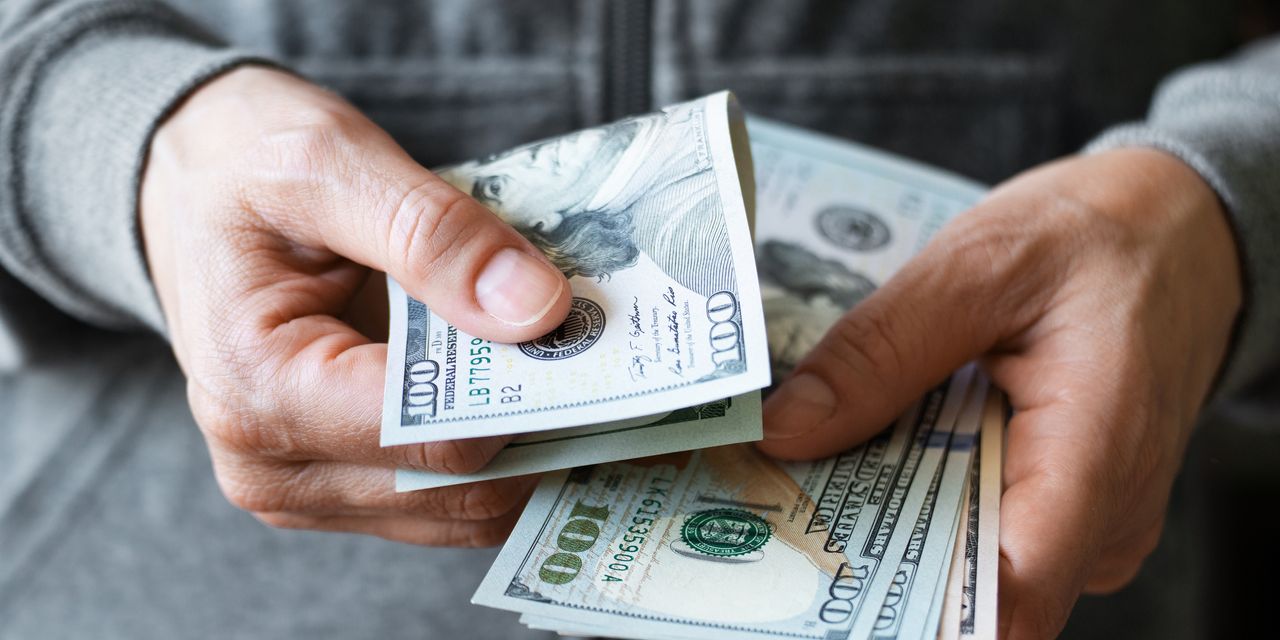A top Deutsche Bank currency analyst has declared that it’s time to sell the U.S. dollar.
George Saravelos, global co-head of FX research at Deutsche Bank, said in a note to clients shared with MarketWatch on Thursday that he’s once again betting that the dollar will weaken against the euro
EURUSD,
as well as the Japanese yen
USDJPY,
British pound
GBPUSD,
and other major currencies.
See: U.S. dollar on pace for sixth consecutive day of decline as inflation cools
See: U.S. Dollar Index chart breakdown warns that further losses loom
Updated forecasts included in the note have the dollar weakening through 2024, with further weakness, or stagnation, seen in 2025.
Saravelos maintained a bullish call for the euro for most of 2023, but went “tactically” bullish on the greenback in May.
But Wednesday’s CPI report, showing U.S. inflation showing to the lowest level since 2021, was the evidence he was waiting for to suggest that the U.S. dollar is likely headed lower, as the Federal Reserve likely won’t need to hike interest rates quite as high, or keep them elevated for longer.
“We have had a bullish bias on EUR/USD throughout this year but tactically took profit in early May awaiting for more confirmation that dollar drivers are turning bearish. [Wednesday’s] US inflation print is the last piece of evidence we have been waiting for to recommend going long EUR/USD again,” Saravelos said.
While his forecast has the euro rising to $1.15 by the end of the year, an advance to $1.20 is “entirely possible.” The shared currency was trading at $1.1228 on Thursday.
According to Saravelos, the dollar is suffering from a double-whammy of sustainable disinflation and strong — but not too strong — economic growth.
“First, we feel increasingly confident that the US disinflation process is well under way,” he said in the note.
“Second, the disinflation process looks increasingly benign. We have been arguing that the most bearish outcome for the dollar is a combination of declining US inflation under relatively OK growth conditions,” he said.
The dollar rallied in 2022 as the Fed’s aggressive interest-rate hikes, including four consecutive jumbo hikes of 75 basis points, widened the differential between the yield investors could reap from holding dollars vs. other currencies, tilting it heavily in the dollar’s favor.
What’s more, fears of a recession, stoked by both aggressive Fed monetary policy and two consecutive quarters of negative economic growth in 2022, caused a rush for safety by international investors into the greenback.
The ICE U.S. Dollar Index
DXY,
rose 7.9% in 2022, its best yearly advance since 2015, according to FactSet data.
At its peak, the dollar index traded just below 115 in late September 2022, its highest level in more than 20 years but has been sliding ever since.
The dollar index was at 99.8 on Thursday after falling 0.8%, its sixth consecutive day in the red. It marked the currency’s longest losing streak since September 2021, according to Dow Jones Market Data. It’s also the indexes lowest level since April 2022. The index has fallen 3.6% so far this year.
Just as the dollar’s September high last year nearly coincided with the stock market’s lows, the greenback’s latest nadir has coincided with a fresh 15-month high for U.S. stocks.
The S&P 500
SPX,
traded above 4,500 on Thursday for the first time since early April 2022, FactSet data show, as the stock-market index powered higher, bolstered by hopes for an end to Fed interest rises this year.
Read the full article here



